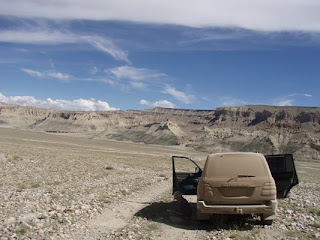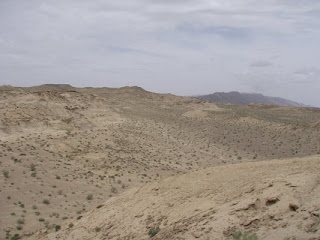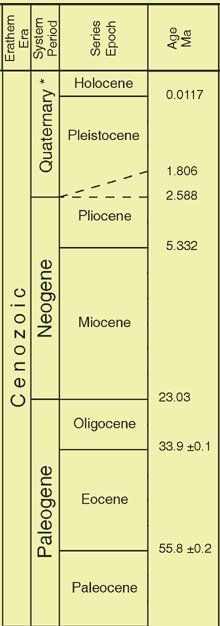 (at the end of the 2007 field season, Gary takes a moment in the shade to contemplate the implications of our research)
(at the end of the 2007 field season, Gary takes a moment in the shade to contemplate the implications of our research)Some of our work is based on important findings of previous explorers to the Tibetan Plateau, but much of it has been built from the ground up in the past decade.
 (Qaidam [Tsaidam] Basin is the largest terrestrial basin on the plateau)
(Qaidam [Tsaidam] Basin is the largest terrestrial basin on the plateau)In 1931, a Swedish vertebrate paleontologist named Birger Bohlin of the Sven Hedin Expeditions got word of fossil occurrences near the Tuosu Nor [nor means lake in Mongolian], at the northeastern area of the Qaidam Basin. He went there and collected several hundred fossil specimens of extinct mammals in 1931 and during a second field season in 1932. He published his findings which were the first scientific documentation of mammal fossils in that part of the plateau.
After the turbulent years of the 1930s and 1940s, Chinese geologists under both the Nationalist government and the new government (post-1949) of the People's Republic of China reported on fossil-rich localities in other areas of the Qaidam Basin. However, no systematic paleontological expeditions were mounted during that entire period until IVPP paleontologists resumed intensive explorations in the mid 1990s.
To date, the Qaidam Basin consitutes the richest sites for our paleontological work (although the Zhada Basin in Tibet also shows potential from our more recent seasons). With an average elevation of ~3000 m (~9843 feet), it is sunny, dry, and windy during the summer months. Occasional storms dot the landscape, and in low-lying areas millions (it seems to us anyway) of mosquitoes thrive.
The basin has an area of around 550 km x 250 km (~342 miles by 155 miles). There are currently four major fossil mammal communities (faunas) known: (1) Olongbuluk (middle Miocene age), (2) Tuosu (early late Miocene), (3) Shengou (middle late Miocene), and (4) Huaitoutala (early Pliocene).
 (Antler of Stephanocemas, an extinct deer with crown-like head ornaments [皇冠鹿] commonly found in the Qaidam Basin)
(Antler of Stephanocemas, an extinct deer with crown-like head ornaments [皇冠鹿] commonly found in the Qaidam Basin)Many of the localities in the Qaidam Basin are revisited by us annually. This coming season (2008) will be no exception. In particular, we hope to return to the hills near Olongbuluk Mountain and Tuosu Nor, close to where Birger Bohlin probably explored more than seven decades ago. We will post news about those sites as we make it there in September!






No comments:
Post a Comment